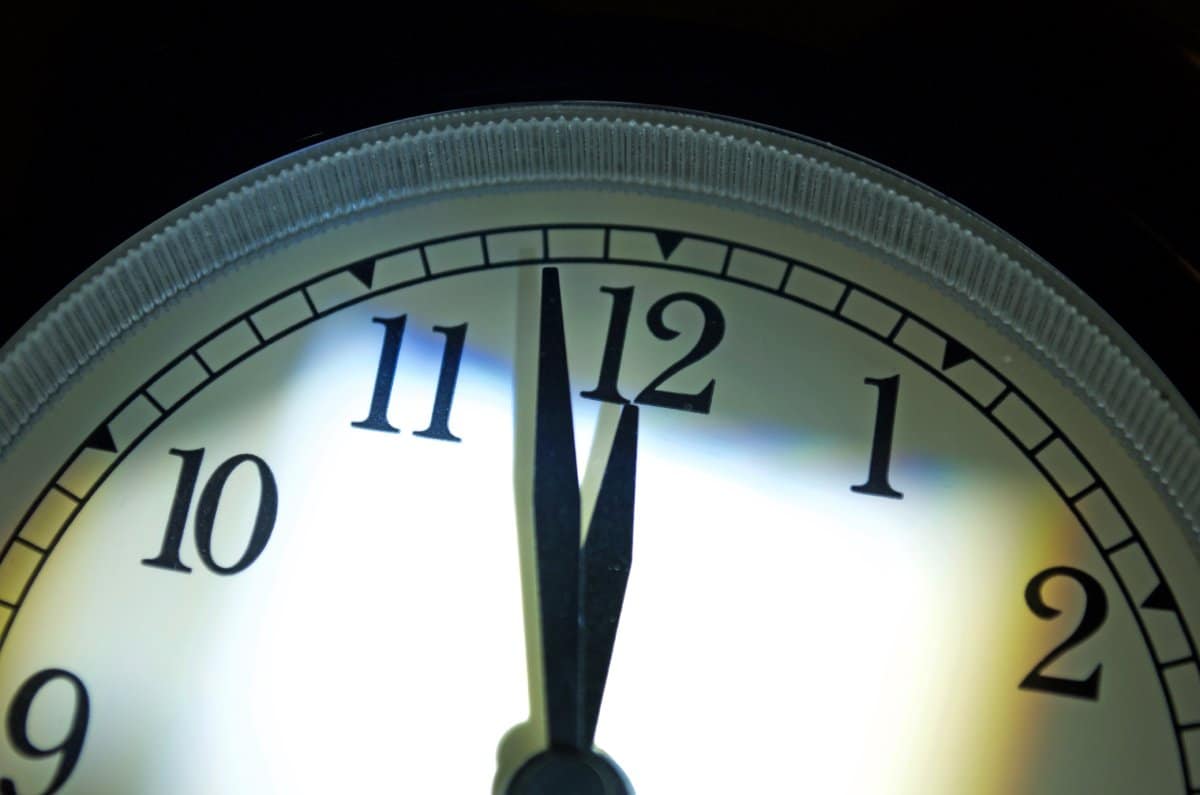Amidst the looming shadows of nuclear threats, modern warfare, and the escalating climate crisis, the Doomsday Clock remains frozen at 90 seconds to midnight, marking the closest proximity to global catastrophe since its inception in 1947. Read on for the full story, while there is still time…
Tick-Tock
Humanity received a little piece of much needed good news recently following an announcement from the Bulletin of the Atomic Scientists, as the Doomsday clock, a symbolic representation of mankind’s proximity to global annihilation, has not been moved any closer to midnight, representing the total destruction of life on earth as we know it.
Unfortunately, there was some bad news to go with it, as the alarming time that the clock is currently stopped at is 90 seconds to midnight, the closest it has been to doomsday since its inception in 1947.
The unsettling time the clock is being maintained at, for now, is due to the persistent threats faced by humanity – the ongoing threat of nuclear catastrophe, the horrific realities of modern warfare and mankind’s persistent inaction when it comes to tackling the impending climate catastrophe.
The Bulletin’s unsettling but entirely understandable decision to keep the clock at 90 seconds to midnight is rooted in the heightened risk to human existence, described by Rachel Bronson, the organisation’s president and chief executive, as “profoundly unstable.” The delightful
The Bulletin’s decision to keep the clock at 90 seconds is rooted in the heightened risk to human existence, described by Rachel Bronson, the organisation’s president and chief executive, as “profoundly unsustainable.”
The confluence of factors contributing to this perilous situation includes the ominous spectre of a nuclear escalation in Ukraine, the grim realities of conflict in Israel and Gaza, and the palpable threat posed by the unrelenting climate crisis, which looms over “billions of lives.”
Tick-Tock
The Bulletin of the Atomic Scientists, established in 1945 by luminaries such as Albert Einstein, aims to educate the public about existential threats. The Doomsday Clock is a symbolic timepiece, annually adjusted to reflect the gravity of human civilization’s challenges. The clock’s time is set by the Bulletin’s science and security board with input from its sponsors, which includes Nobel laureates.
The setting of the clock at 90 seconds to midnight echoes the dire warning issued by the Bulletin in 2023, which highlighted the unprecedented risk to humanity.
Russia’s invasion of Ukraine, along with the former superpowers thinly veiled nuclear threats were identified as significant, if unsettling, contributors to the increased danger. The scientists hoped that by setting the clock so close to midnight, they could emphasise the fragility of global peace and stability in the face of ever heightening global tensions.
The Bulletins 2024 announcement should come as no surprise to anyone who has been paying attention to life on earth for the past year. A number of ever more unpredictable global threats have arisen, which has influenced the scientists decision.
The Russia-Ukraine war, the erosion of nuclear arms reduction treaties, the climate crisis exacerbated by 2023 being officially declared the hottest year on record, the rising sophistication of genetic engineering technologies, and the rapid advancement of generative AI, all pose a challenge to humanity’s ability to continue as a species.
Tick-Tock
As so often happens when scientists try to warn humanity of the imminent danger it finds itself in, critics have spoken out against the Bulletin. They accuse the organisation of using “scare tactics” as the Doomsday Clock has steadily inched closer to midnight over the years.
The clock, measured initially in whole minutes, transitioned to two minutes and 30 seconds in 2017 and has since adopted seconds, now holding ominously at 90 seconds to midnight.
In response to the disaster movie plot accusations of bias and sensationalism, the Bulletin asserts that it operates with no political agenda.
The organisation emphasises that the clock has moved away from midnight nearly as often as it has moved closer. The distinction is crucial, and those of us who enjoy our continued existence should hope it’s one that is closely paid attention to.
Despite the appropriately funereal tone of the announcement, Rachel Bronson ended the announcement with a note of optimism, however faint. While acknowledging the urgent need for global action, she points to the younger generations as beacons of hope, leading the charge for change.
Even in the face of the unprecedented risk reflected by the Doomsday Clock, there remains room for hope and the potential for positive transformation before the clock strikes midnight.
The post Doomsday Clock Stands Still at 90 Seconds to Midnight first appeared on Pulse365 Limited.
Featured Image Credit: Shutterstock / Linda Parton.

